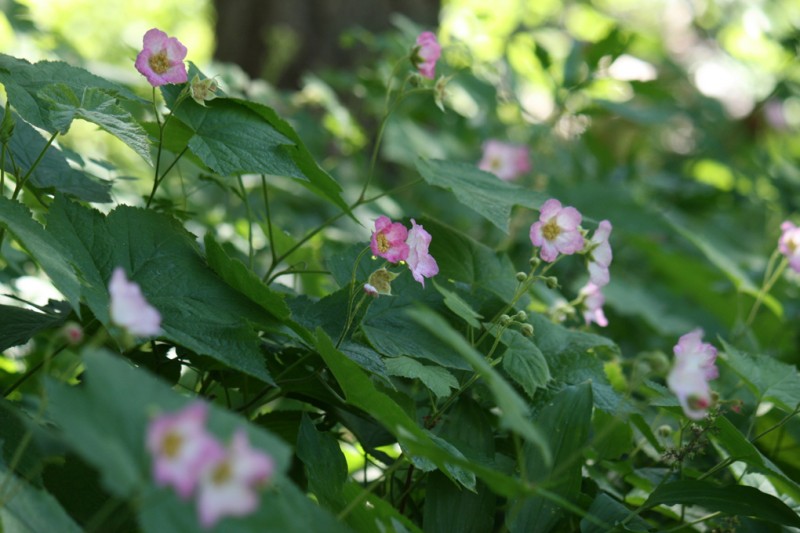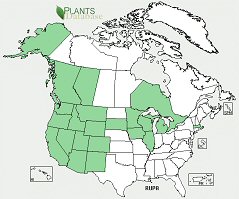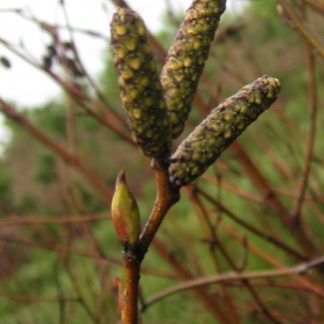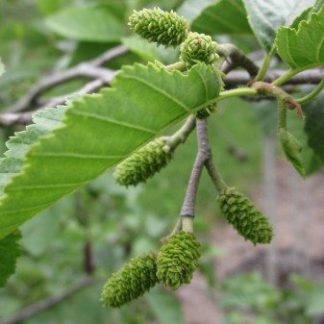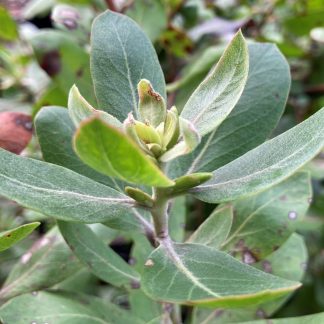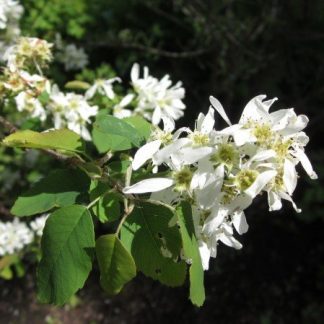Rubus parviflorus
thimbleberry
Habit: growing in large clumps this invitingly delicate upright shrub has large dark green, velvety soft, star shaped leaves with 3-7 lobes. Stems are strong and flexible without prickles and the grayish bark becomes flaky with age. Fragrant flowers are in clusters of 3-11 in terminal clusters, the five petals are white occasionally pink and wrinkled. The fruit is an edible aggregate of drupes, resembling a thimble, and raspberry, although a deeper red. Blooms in early summer, and fruit are available to eat in mid to late summer. Leaves turn brilliant orange to maroon in fall.
Ecology: found in Alaska and the Western United States, as well as the Great Lakes Region, with South Dakota bridging the two ranges. Thimbleberry is found growing in riparian zones, and moist shaded forests growing from sea level up to 6900 ft. (2100 m).
Growing Conditions: full sun to partial shade, nutrient rich moist to seasonally dry soil; will tolerate seasonal flooding.
Thimbleberry provides cover and food for wildlife. Be aware that this plant because of its ability to reproduce vegetatively by suckers and rhizomes, can be mildly aggressive, although for this same reason it is a good choice for erosion control.
Specs
Deciduous Shrub
3-8 ft (1-2.5 m)
3-6 ft (1-2 m)
4-10


